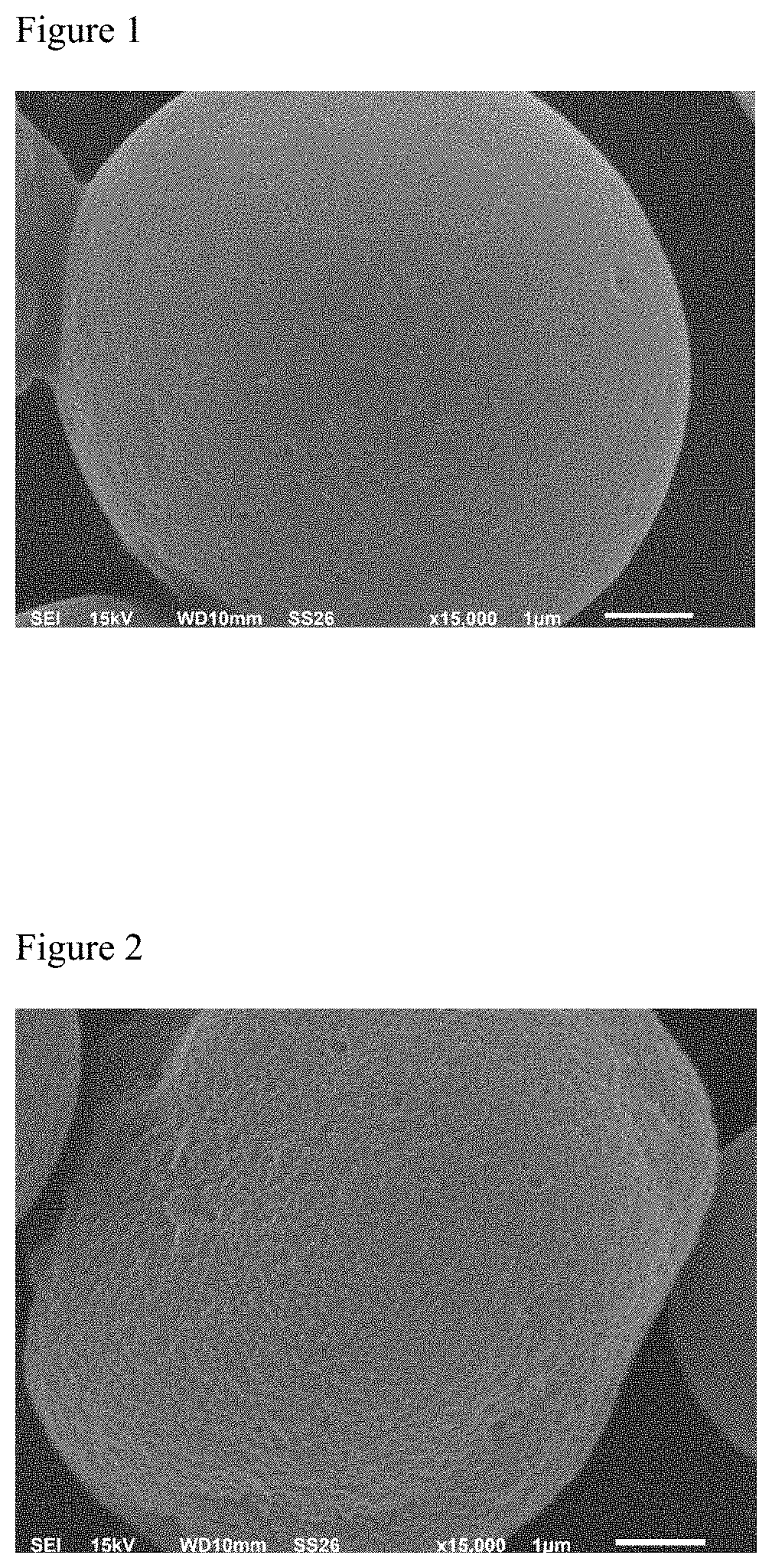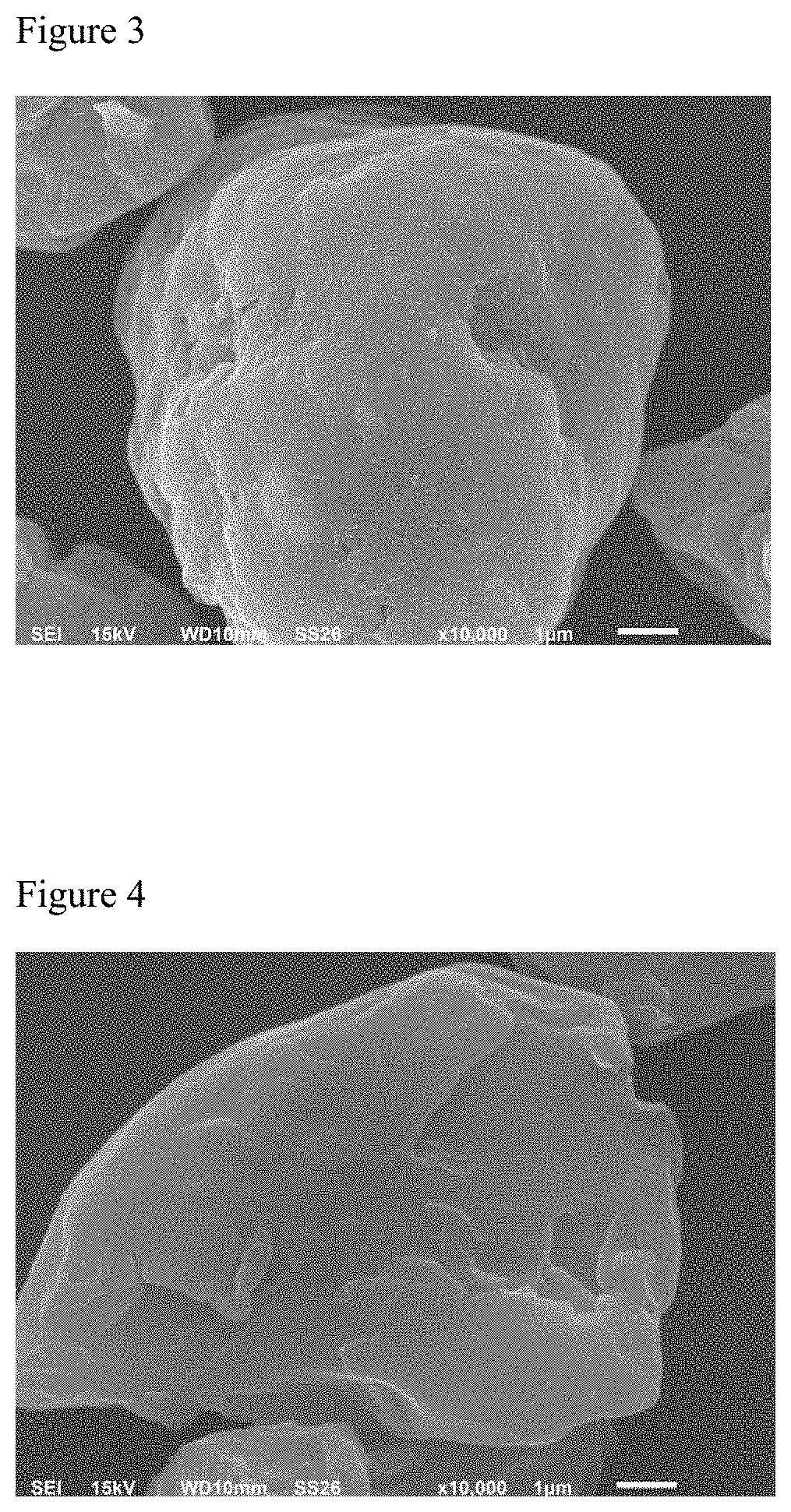Toner blends comprising of a clear toner and a pigmented toner
a technology of toner and pigment, applied in the field of toner blends, can solve the problems of negatively affecting the color density of the image achieved by the toner, and achieve the effects of reducing the cost of the toner, reducing the pigment loading of the toner, and negatively affecting the image color density
- Summary
- Abstract
- Description
- Claims
- Application Information
AI Technical Summary
Benefits of technology
Problems solved by technology
Method used
Image
Examples
examples
Example Polyester Resin Emulsion A
[0044]A mixed polyester resin having a peak molecular weight of about 9,000, a glass transition temperature (Tg) of about 53° C. to about 58° C., a melt temperature (Tm) of about 110° C., and an acid value of about 7 to about 12 was used. The glass transition temperature is measured by differential scanning calorimetry (DSC), wherein, in this case, the onset of the shift in baseline (heat capacity) thereby indicates that the Tg may occur at about 53° C. to about 58° C. at a heating rate of about 5° C. per minute. The acid value may be due to the presence of one or more free carboxylic acid functionalities (—COOH) in the polyester. Acid value refers to the mass of potassium hydroxide (KOH) in milligrams that is required to neutralize one gram of the polyester. The acid value is therefore a measure of the amount of carboxylic acid groups in the polyester.
[0045]150 g of the mixed polyester resin was dissolved in 450 g of methyl ethyl ketone (MEK) in a ...
example polyester
Resin Emulsion C
[0047]A polyester resin having a peak molecular weight of about 13,000, a glass transition temperature of about 58° C. to about 62° C., a inelt temperature of about 117° C., and an acid value of about 17 to about 23 was used to form an emulsion using the procedure described in Example Polyester Resin A, except using 10 g of the 10% potassium hydroxide (KOH) solution. The particle size of the Polyester Resin Emulsion C was between about 190 nm and about 240 nm (volume average) as measured by a NANOTRAC Particle Size Analyzer. The pH of the resin solution was between about 6.5 and about 7.0.
Example Wax Emulsion
[0048]About 12 g of AKYPO RLM-100 polyoxyethylene(10) lauryl ether carboxylic acid from Kao Corporation, Bunka Sumida-ku, Tokyo, Japan was combined with about 325 g of de-ionized water and the pH was adjusted to 7-9 using sodium hydroxide. The mixture was then processed through a microfluidizer and heated to about 90° C. About 60 g of polyethylene wax from Petrol...
formulation examples
Toner Formulation Examples
Preparation of CPT Clear Toner
[0050]In a 5 L reactor was placed about 11.25 parts of a paraffin wax dispersion, 42.24 parts of a medium Tg (Tg=56° C.) polyester resin emulsion A, 16.18 parts of a low Tg (Tg=53° C.) polyester resin emulsion B and sufficient water to achieve about 13% solids. De-stabilization of the pigment dispersion, wax dispersion, and latex emulsions were achieved by the addition of an acid such as sulfuric acid, until a pH of about 1.5 to 2.3 is achieved. The destabilization can involve a change in stirring speed to achieve a desired particle size. The temperature was then increased to about 41° C. and held at this temperature for about 45 minutes to about 90 minutes, to achieve a particle size of about 5.0-5.2 μm (volume). Upon reaching the desired particle size, about 2.77 parts of borax dispersion is added followed by stirring for about 5 to 15 minutes. About 31.41 parts of a high Tg (Tg=60° C.) polyester resin emulsion C is then adde...
PUM
| Property | Measurement | Unit |
|---|---|---|
| particle size | aaaaa | aaaaa |
| particle size | aaaaa | aaaaa |
| particle size | aaaaa | aaaaa |
Abstract
Description
Claims
Application Information
 Login to View More
Login to View More - R&D
- Intellectual Property
- Life Sciences
- Materials
- Tech Scout
- Unparalleled Data Quality
- Higher Quality Content
- 60% Fewer Hallucinations
Browse by: Latest US Patents, China's latest patents, Technical Efficacy Thesaurus, Application Domain, Technology Topic, Popular Technical Reports.
© 2025 PatSnap. All rights reserved.Legal|Privacy policy|Modern Slavery Act Transparency Statement|Sitemap|About US| Contact US: help@patsnap.com


